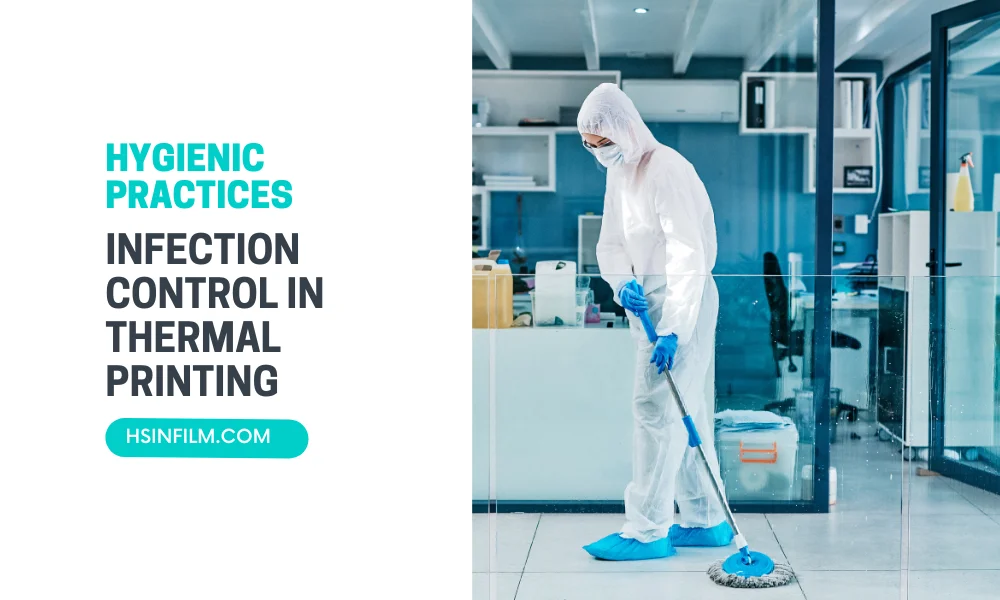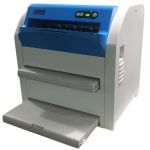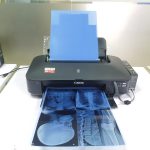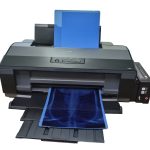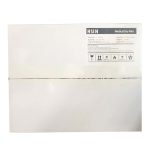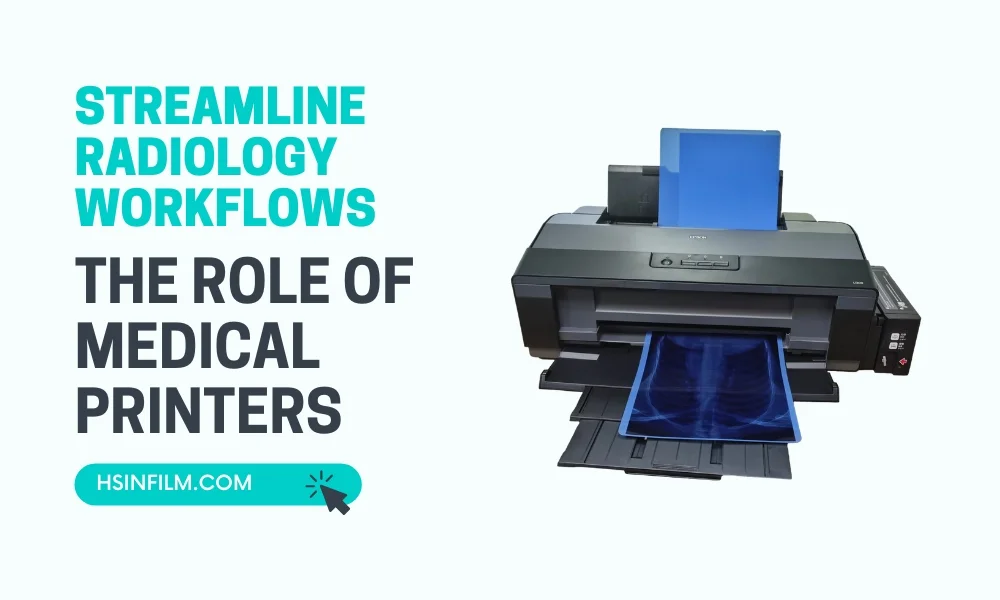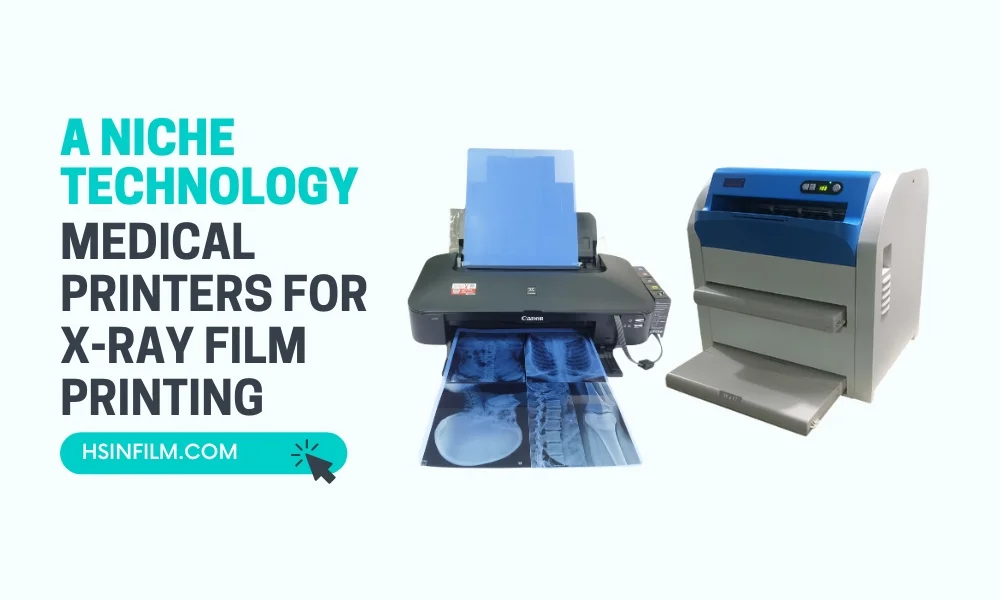In healthcare, infection control is necessary. Thermal printers, used for producing documents and images in medical imaging, can pose infection risks if hygiene practices are not followed. This article highlights the importance of infection control in thermal printing and provides clear guidelines for maintaining hygiene.
Table of Contents: Infection Control in Thermal Printing
Why Infection Control Matters in Medical Printing
Medical imaging equipment, including thermal printers, often sits in patient-heavy environments like radiology suites and labs. These devices are frequently handled by multiple staff members, making them potential vectors for pathogen transmission if not regularly disinfected.
Key concerns include:
- Cross-Contamination: Handling of paper, film, or controls can transfer pathogens.
- High-Touch Surfaces: Printer buttons, screens, and paper trays can harbor bacteria.
- Proximity to Patients: Printers located near diagnostic equipment are exposed to bodily fluids, increasing contamination risks.

Common Infection Risks in Thermal Printing
While medical thermal printers don’t involve direct patient contact, indirect contamination poses significant risks.
- Paper and Film Handling
- Risk: Pathogens can transfer from staff hands to printouts.
- Solution: Implement strict hand hygiene before and after handling printed materials.
- Shared Equipment
- Risk: Multiple users touching the printer throughout the day.
- Solution: Schedule regular cleaning of printer surfaces and controls.
- Printer Placement
- Risk: Printers placed too close to patient areas or unclean surfaces.
- Solution: Designate specific, low-risk areas for printing to reduce contamination exposure.
Also read: Applications of Medical Thermal Printers in Specialized Medical Fields
Best Practices for Hygienic Thermal Printing
Maintaining infection control in medical imaging and printing requires a proactive approach.
1. Regular Cleaning and Disinfection
- Frequency: Clean printer surfaces daily, with additional disinfection during high-use periods.
- Products: Use alcohol-based wipes or hospital-grade disinfectants that are safe for electronics.
2. Proper Hand Hygiene
- Encourage staff to sanitize hands before and after handling printouts.
- Install hand sanitizer stations near printers for convenience.
3. Use of Disposable Gloves
- For high-risk areas, staff can wear disposable gloves when handling printer controls or loading paper. Dispose of gloves immediately after use.
4. Printer Covering
- Use protective covers to shield printers from dust and accidental fluid exposure, ensuring covers are regularly replaced or cleaned.
Infection Risks of Thermal Printing in Healthcare Settings
Thermal printers are widely used in healthcare for printing labels, prescriptions, and diagnostic images. While they are efficient and reliable, they can also pose unexpected infection risks if not properly maintained and handled. Let’s explore how these risks arise and how to minimize them.
1. How Thermal Printers Can Spread Infections
- High-Touch Surfaces: The printer’s buttons, paper trays, and output areas are frequently touched by multiple healthcare workers throughout the day. If hands are contaminated, these surfaces can become breeding grounds for bacteria and viruses.
- Dust and Debris Accumulation: Printers that collect dust and debris can harbor microbes. When the printer operates, heat may release particles into the air or onto printed materials, potentially spreading contaminants.
- Cross-Contamination: Labels and documents printed for one patient may come into contact with surfaces contaminated by other patients, increasing the risk of spreading infections.
2. Common Areas of Concern
- Radiology Departments: Film and image printouts can pass through multiple hands, raising the chance of pathogen transfer.
- Laboratories: Thermal printers used for labeling samples can introduce contamination if staff handle samples and printer interfaces without gloves.
- Pharmacies: Printed prescription labels handled by pharmacists and patients can potentially carry germs if not handled with proper hygiene.
3. Reducing Infection Risks
1. Regular Cleaning and Disinfection
- Daily Wipe-Downs: Use hospital-grade disinfectants to clean the printer’s exterior, buttons, and paper feed areas at least once per day.
- Focus on High-Touch Areas: Pay extra attention to areas like the control panel and output tray.
- Avoid Excess Moisture: Use disinfectant wipes instead of sprays to prevent liquid from seeping into the printer’s internal components.
2. Implement Touch-Free Protocols
- Stylus or Gloves: Encourage staff to use a stylus or wear gloves when interacting with printers to minimize direct contact.
- Hands-Free Printing: Where possible, automate printing tasks to reduce physical handling of printers.
3. Paper Handling Hygiene
- Dedicated Trays: Use separate trays for incoming and outgoing prints to reduce cross-contamination.
- Glove Use: Wear gloves when handling printouts, especially in high-risk areas like labs or isolation wards.
4. Routine Maintenance
- Internal Cleaning: Schedule periodic internal cleaning to remove dust buildup that could harbor microbes.
- Service Checks: Ensure printers are regularly serviced to keep them functioning efficiently and hygienically.
4. Training Staff on Best Practices
- Hygiene Protocols: Train staff on the importance of disinfecting printers and handling printouts safely.
- Clear Signage: Place reminder signs near printers to encourage regular cleaning and safe paper handling practices.
By implementing regular cleaning routines, adopting touch-free protocols, and promoting hygiene awareness, healthcare facilities can minimize the risks and ensure a safer environment for patients and staff.
Hygienic Practices for Thermal Printing
To mitigate infection risks associated with thermal printing, healthcare facilities must establish and maintain strict hygiene practices.
Hand Hygiene
Hand hygiene is the first line of defense. Healthcare professionals should adhere to proper handwashing protocols before operating thermal printers. Here are the steps to effective hand hygiene:
- Wet your hands with clean, running water.
- Apply soap and lather your hands thoroughly, including the back of your hands, between your fingers, and under your nails.
- Scrub your hands for at least 20 seconds.
- Rinse your hands thoroughly under clean, running water.
- Dry your hands with a clean towel or air dryer.
- Use a paper towel to turn off the faucet and open the door if necessary.
Printer Surface Cleaning
Regular cleaning of thermal printer surfaces is essential. Healthcare facilities should:
- Use disinfectant wipes or solutions recommended by the printer’s manufacturer.
- Clean printer surfaces, including buttons, screens, and covers.
- Pay special attention to areas that are frequently touched.
Protective Barriers
Consider using protective barriers or covers for thermal printers. These barriers act as shields, preventing contamination of the printer’s surfaces. They can be easily cleaned or replaced as needed.
Regular Maintenance
Routine maintenance of thermal printers is crucial. Develop a maintenance checklist that includes:
- Cleaning schedules
- Inspection for wear and tear
- Prompt repairs or replacements as needed
Cleaning and Disinfecting Thermal Printers in Healthcare Settings
Frequent use of thermal printers makes them potential sites for contamination. Regular cleaning and disinfection are essential to reduce infection risks and maintain equipment longevity. Here’s a step-by-step guide to ensure thermal printers are properly maintained.
1. Preparation and Safety
Gather Supplies:
- Hospital-grade disinfectant wipes (compatible with electronics)
- Lint-free microfiber cloths
- Isopropyl alcohol (70%)
- Compressed air (optional)
- Disposable gloves
- Soft brush or cotton swabs
Turn Off and Unplug the Printer:
- Always disconnect the printer from the power source to avoid electrical hazards.
- Let the printer cool down if recently used.
Wear Gloves:
- Put on disposable gloves to prevent contamination and protect your hands from disinfectants.
2. External Cleaning (Daily Routine)
Wipe Down Surfaces:
- Use disinfectant wipes to clean the printer’s exterior, including buttons, display screens, and paper feed areas.
- Pay special attention to frequently touched areas like the control panel.
Handle with Care:
- Avoid applying excessive pressure to touchscreens or buttons to prevent damage.
Avoid Liquid Seepage:
- Never spray disinfectant directly onto the printer. Use a damp cloth or wipe to prevent liquid from entering internal components.
3. Internal Cleaning (Weekly/Monthly)
Open the Printer (if applicable):
- Follow the manufacturer’s guidelines to open the printer for internal cleaning.
Dust Removal:
- Use compressed air to gently blow out dust and debris from paper trays, rollers, and other internal parts.
- A soft brush or cotton swab can be used to remove stubborn particles.
Clean the Print Head:
- Dip a lint-free cloth or cotton swab in isopropyl alcohol (70%) and gently wipe the print head to remove buildup.
- Let the print head dry completely before closing the printer.
4. Paper Tray and Output Area
- Clean Paper Feed Trays: Remove and wipe down paper trays, ensuring no dust or residue is present.
- Disinfect the Output Tray: Wipe the area where printed materials are collected to prevent contamination.
5. Touchscreen and Keypad Care
- Use alcohol-based disinfectant wipes specifically designed for screens and electronics.
- Dry with a soft, lint-free cloth to avoid streaks or damage.
6. Routine Maintenance Schedule
- Daily: Wipe down external surfaces, control panels, and output areas.
- Weekly: Perform light internal cleaning and remove debris.
- Monthly: Deep clean print heads, rollers, and internal components.
Additional Tips
- Follow Manufacturer Guidelines: Always refer to the printer’s manual for specific cleaning recommendations.
- Replace Consumables: Regularly replace thermal paper and ribbons to prevent residue buildup.
- Monitor Performance: Address print quality issues promptly by checking for dirt or contamination on internal components.
By following these procedures, healthcare facilities can ensure that thermal printers remain safe, functional, and free from contamination risks.
Handling and Disposing of Thermal Printing Consumables in Healthcare Settings
Thermal printers are essential in healthcare for generating patient labels, wristbands, and reports. However, used thermal paper, ribbons, and cartridges can harbor pathogens, posing a risk of cross-contamination. Proper handling and disposal of these consumables help minimize infection risks and maintain a safe environment.
1. Handling Thermal Printing Consumables
1.1 Wear Personal Protective Equipment (PPE):
- Always wear disposable gloves when handling used thermal paper, ribbons, or cartridges.
- Consider wearing a mask when disposing of large volumes of consumables to avoid inhaling dust or particles.
1.2 Limit Direct Contact:
- Handle consumables by the edges and avoid touching the printed surface to reduce the spread of contaminants.
- Place used consumables directly into designated waste bins without placing them on countertops or desks.
1.3 Store in a Clean Area:
- Store unused thermal paper and ribbons in a clean, dry location, away from direct patient areas.
- Ensure consumables are in sealed packaging until ready for use to prevent contamination.
2. Disposal of Thermal Paper and Ribbons
2.1 Use Dedicated Waste Bins:
- Designate separate bins for used thermal paper and ribbons.
- Label these bins clearly as “Non-Hazardous Office Waste” or “Confidential Disposal” if patient information is printed.
2.2 Shred or Incinerate:
- Shred thermal paper that contains sensitive patient information to protect confidentiality.
- Incinerate used ribbons, as they may retain traces of printed data even after use.
2.3 Secure Disposal of Cartridges:
- Collect used ink ribbons or cartridges in a secure container and dispose of them through a certified waste management service.
- Ensure the container is sealed to prevent accidental exposure.
3. Infection Control Measures
3.1 Regular Waste Removal:
- Empty thermal waste bins daily or more frequently in high-use areas.
- Clean and disinfect the bins regularly to prevent the accumulation of pathogens.
3.2 Avoid Overfilling Bins:
- Replace bins when they are 75% full to prevent spillage or accidental exposure when transferring waste.
3.3 Disinfect Work Areas:
- After handling or replacing consumables, disinfect all surfaces the materials may have touched.
- Pay attention to printer buttons, trays, and paper feed areas.
4. Recycling and Sustainability
4.1 Recycle Non-Contaminated Materials:
- Some thermal paper products and cartridges can be recycled. Verify with manufacturers or recycling services if consumables are eligible for recycling.
- Ensure materials are free of patient data before recycling.
4.2 Eco-Friendly Alternatives:
- Use BPA-free thermal paper to reduce environmental impact and enhance safety.
- Consider switching to digital documentation where possible to minimize consumable waste.
5. Staff Training and Awareness
5.1 Train Staff on Proper Disposal:
- Educate healthcare workers on the importance of handling and disposing of thermal printing consumables safely.
- Provide visual guides or posters near printing stations outlining disposal procedures.
5.2 Monitor Compliance:
- Regularly audit disposal practices to ensure protocols are followed consistently.
- Encourage staff to report any issues or concerns regarding waste management.
By adhering to these handling and disposal guidelines, healthcare facilities can minimize infection risks, protect sensitive patient information, and promote a cleaner, safer work environment.
Training and Education
Training Programs
To foster a culture of infection control, healthcare facilities should develop training programs for staff. These programs can cover:
- Proper Handwashing: Educate staff on the correct handwashing techniques and the importance of hand hygiene.
- Printer Handling: Train users on how to handle thermal printers to minimize contamination risks.
- Cleaning Procedures: Provide instructions on the correct use of disinfectants and cleaning procedures for printer surfaces.
- Maintenance Awareness: Ensure that staff understand the significance of routine printer maintenance.
Ongoing Education
Education is not a one-time event. Healthcare facilities should offer ongoing education and reinforcement of infection control principles. Regular reminders and updates help keep hygiene practices at the forefront of healthcare professionals’ minds.
Patient Education
The Role of Patients
Patients can also play a role in infection control related to thermal printing. Educate patients on the importance of hygiene practices and encourage them to:
- Ask Questions: Encourage patients to inquire about the hygiene measures in place for thermal printers.
- Voice Concerns: Patients should feel comfortable voicing any concerns about infection control practices.
- Hand Hygiene: Remind patients to practice hand hygiene before handling printed materials or interacting with thermal printers.
Conclusion
Infection control in thermal printing is an essential aspect of healthcare operations. By adhering to stringent hygiene practices, healthcare facilities can reduce infection risks, protect patients and staff, and enhance the overall quality of care. Prioritizing infection control in thermal printing is a crucial step toward safer healthcare environments.
